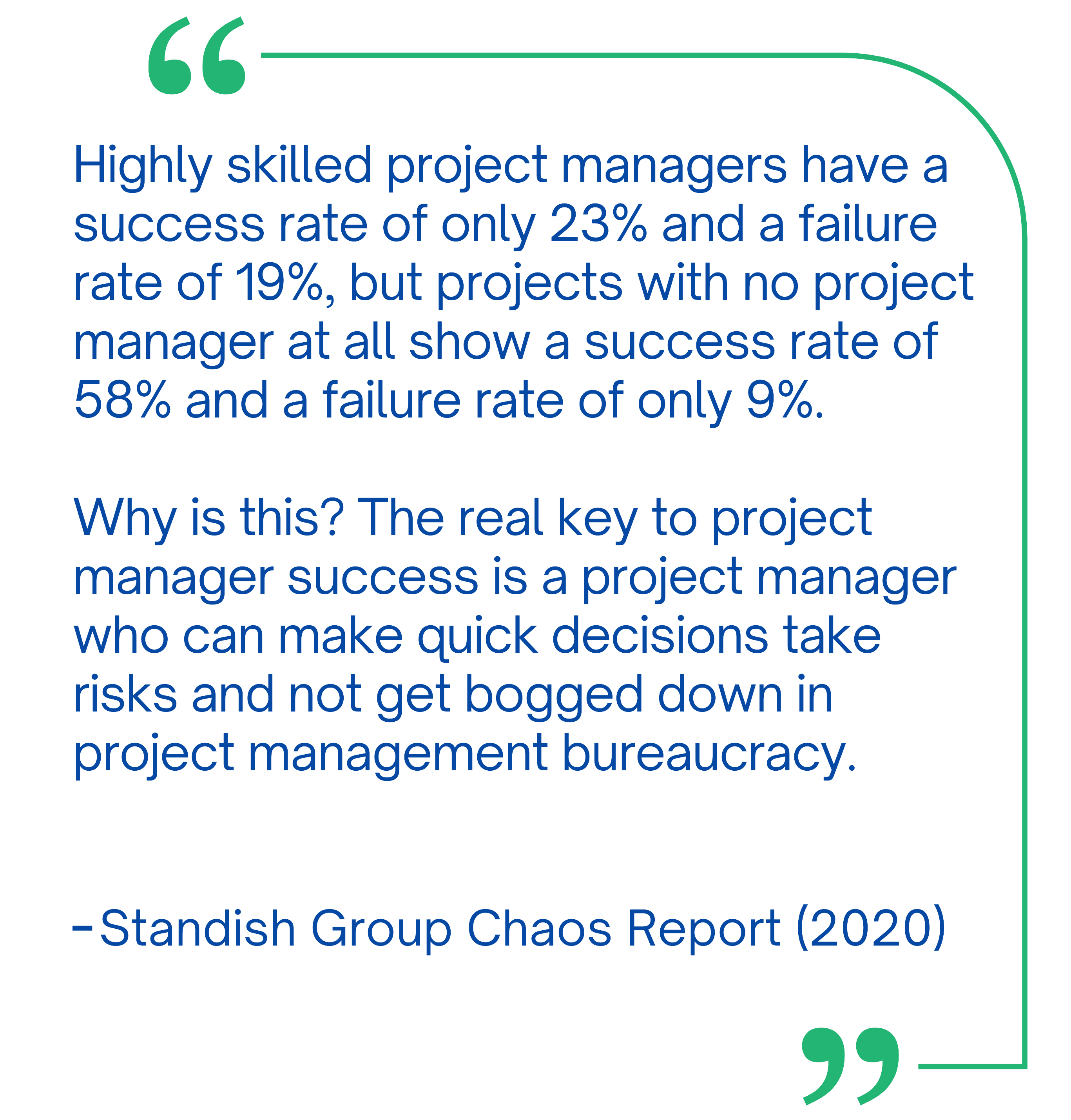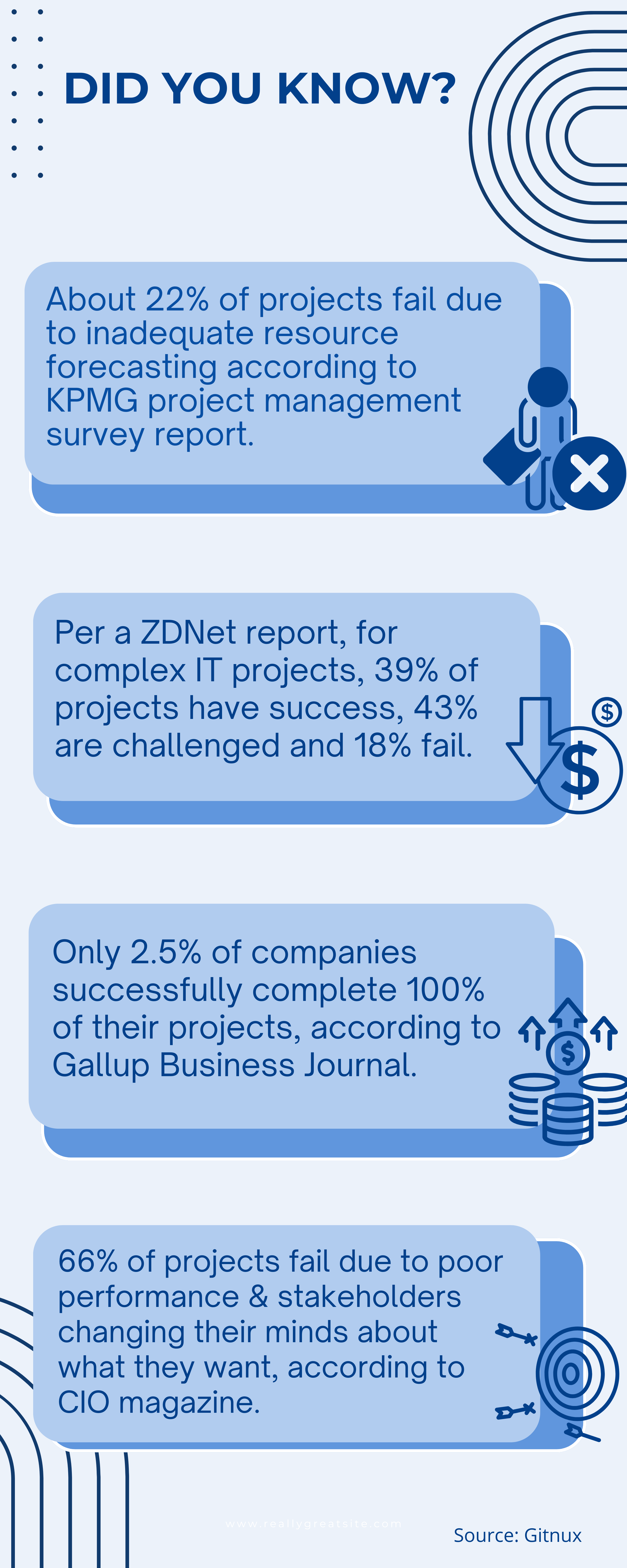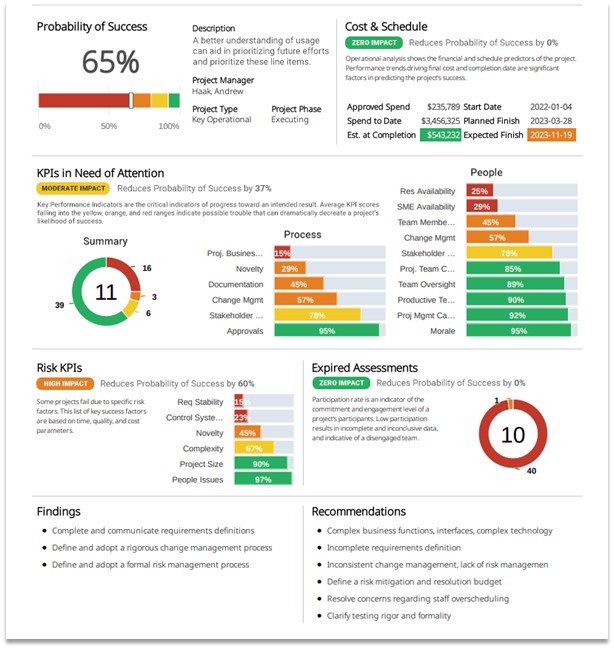
Did you know that a Harvard Business Review report found that a staggering one in six IT projects experiences a cost overrun of 200% and a schedule overrun of 70%? These delays and budget balloons can cripple any endeavor, leaving leaders scrambling to salvage the situation. The good news? Many of these issues could be prevented with a proactive approach. This article explores the predictive solutions that empower early warning systems, their benefits, and best practices for excellence in project execution.
By implementing intuitive systems, leaders gain real-time insights into potential roadblocks before they become unmanageable risks. Imagine having the foresight to identify and address critical resource shortages, scope creep, or communication breakdowns early on. This proactive approach can save time, money, and the frustration that comes with reactive actions. Early warning systems can be the difference between a project spiraling out of control and achieving a successful, on-time, and on-budget outcome. Essentially, it empowers leaders to steer their initiatives clear of hidden dangers and toward a smooth, predictable execution.
Why Must You Harness Early Warning Systems? 
In project execution, predictive early warning systems emerge as a game-changer, proactively identifying and mitigating risks before they escalate. With advanced AI algorithms, early warning systems continuously monitor project metrics, offering real-time insights. The necessity of leveraging modern solutions cannot be overstated; it empowers leaders to detect and address issues early on.
You can identify even the subtle deviations by harnessing a predictive intelligence solution, allowing for timely interventions. Moreover, it streamlines decision-making, presenting actionable insights for informed choices. This proactive approach minimizes setbacks and optimizes resource allocation.
Furthermore, it fosters transparency and collaboration among stakeholders, offering a comprehensive view of project health. With heightened visibility, leaders communicate effectively, addressing challenges collectively and promptly. Through concrete examples and addressing concerns, the unique value proposition becomes clear.
Eight Signs of Early Warning Systems (How to Mitigate Them)
Effective project execution necessitates a proactive approach, identifying and mitigating potential risks before they escalate. Explore the eight key warning signs that AI-driven early warning systems can effectively address:
 Warning Sign 1 - Unclear or Unrealistic Project Goals
Warning Sign 1 - Unclear or Unrealistic Project Goals
Problem
Unclear or unrealistic project goals and objectives can lead to confusion, a lack of direction, and misaligned efforts among team members. This often results in procrastination, burnout, and, ultimately, project failure.
How do you handle it?
- Clearly define project scope to avoid ambiguity.
- Set realistic goals to align with stakeholder expectations and resources.
- Conduct detailed meetings and individual discussions for role clarity and project objectives.
- Use intuitive solutions for clear communication and stakeholder alignment from the start.
Warning Sign 2 - Poor Time Management
Problem
Inaccurate time estimation, flawed scheduling, and inadequate tracking can lead to missed deadlines, increased risk exposure, and potential project derailment.
How do you handle it?
- Use AI solutions for project scheduling, leveraging historical data and analytics for precise timelines.
- Optimize with task dependencies, prioritization, and resource management.
- Track progress via AI dashboards for timely adjustments.
- Promote clarity and responsibility by updating the team on schedules and duties.
Warning Sign 3 - Poor Workplace Communication 
Problem
Breakdowns in communication can lead to misunderstandings, delays, and inefficient project execution, ultimately jeopardizing the chances of project success.
How do you handle it?
- Promote open communication with team activities and inclusivity.
- Use AI-powered solutions for easy feedback and team communication.
- Support an environment where concerns and ideas are freely shared.
- Hold regular meetings to align and tackle communication issues.
Warning Sign 4 - Inadequate Resource Allocation
Problem
Improper resource allocation can lead to overutilization or underutilization of team members, resulting in burnout, quality issues, and project delays.
How do you handle it?
- Use AI-led solutions for resource forecasting and optimization.
- Monitor resource use with AI to adjust workloads.
- Limit multitasking for focused, high-quality work.
- Encourage cross-functional teamwork for flexible resource use.
Warning Sign 5 - Lack of Project Monitoring
Problem
Failure to consistently monitor project progress, key metrics, and performance indicators can lead to a disconnect between actual progress and planned objectives, resulting in costly delays and potential project failure.
How do you handle it?
- Use AI-powered solutions for real-time project tracking and visual solutions like Gantt charts.
- Employ AI analytics for insights on KPIs, risks, and informed decision-making.
- Regularly adjust projects to meet goals, budget, and deadlines.
- Encourage ongoing improvement with AI insights and retrospectives for future optimizations.
 Warning Sign 6 - Unhealthy Client Relationships
Warning Sign 6 - Unhealthy Client Relationships
Problem
A strained or adversarial relationship with the client can lead to misaligned expectations, constant conflicts, and a breakdown in trust, ultimately jeopardizing project success.
How do you handle it?
- Set clear stakeholder expectations for roles and communication.
- Get a detailed project brief for alignment and accountability.
- Keep open communication with AI reports and video conferencing.
- Build a personal connection with the client to enhance collaboration.
Warning Sign 7 - Unresolved Conflicts
Problem
Unaddressed conflicts within the project team can lead to decreased productivity, strained relationships, and a toxic work environment, ultimately hindering project progress and success.
How do you handle it?
- Opt for in-person or video calls for conflict resolution to benefit from nonverbal cues and open discussions.
- Employ active listening and empathy to grasp different viewpoints and address the core issues of conflicts.
- View conflicts as chances for growth, resolving them quickly with structured methods and AI mediation solutions.
- Promote a psychologically safe environment for openly expressing concerns without fear of negative consequences.
Warning Sign 8 - Difficult Stakeholders
Problem
Stakeholders who are either barely involved or overly involved can create misalignment, constant disruptions, and a lack of clear decision-making, ultimately derailing project progress and success.
How do you handle it?
- Identify stakeholders, their roles, and involvement levels from the start.
- Utilize AI for stakeholder management, ensuring regular updates and feedback.
- Set fixed communication schedules and platforms for stakeholder engagement.
- Collaborate with stakeholders, valuing their input while defining team authority.
The Benefits of AI-Powered Early Warning Systems
AI-powered early warning systems leverage advanced analytics and machine learning models to provide accurate forecasts, automate reporting processes, and optimize resource allocation. These AI-enabled solutions employ predictive analytics to identify potential risks, simulate scenarios, and quantify their impact, empowering project leaders with data-driven insights for effective decision-making. Moreover, AI-derived early warning systems facilitate real-time project monitoring, promptly highlighting areas for improvement and enabling a lean, agile approach to project execution. Here are a few key benefits of leveraging AI-driven early warning systems:
- Increased Accuracy and Forecasting - Leveraging advanced algorithms and historical data analysis, AI-driven early warning systems enable project leaders to anticipate risks, opportunities, and scenarios with higher precision.
- Task and Reporting Automation - Early warning systems powered by AI automate tedious tasks and reporting processes, providing real-time, data-driven insights to stakeholders without manual intervention.
- Cost Estimation and Budgeting - AI-enabled systems analyze past project data to predict costs and durations confidently, assisting in effective budget forecasting and resource allocation.
- Optimized Resource Allocation and Prioritization - By utilizing predictive analytics, AI-led systems provide insights into efficient resource utilization, allowing informed decisions and anticipation of future resource requirements.
- Enhanced Risk Management - Early warning systems employ advanced AI analytics to identify hidden risks, quantify their impact, and empower leaders to prioritize risk mitigation strategies effectively.
- Predictive Analytics Capabilities - AI-derived systems utilize predictive analytics to forecast project outcomes, enabling proactive decision-making and course corrections.
- Real-time Project Monitoring - With AI-enabled real-time reporting and analysis, early warning systems continuously monitor project metrics, promptly highlighting areas for improvement and facilitating a lean, agile approach to project execution.
The graphic below represents a robust, AI-driven project execution solution that provides early warning signs by capturing the core KPIs most critical to your project's success.

Best Practices for Implementing Early Warning Signs
Implementing early warning systems for project execution requires careful planning and execution to ensure effectiveness. Project leaders must adopt a comprehensive implementation strategy to harness the full potential of early warning systems. This includes defining objectives aligned with organizational goals and selecting the right AI-enabled solution that meets project requirements. Establishing well-defined processes and workflows, outlining how AI algorithms will collect, analyze, and act upon data. Key best practices for implementing early warning systems include:
- Continuous performance monitoring through KPIs and user feedback.
- Iterative improvement based on insights and lessons learned.
- Seamless integration with existing systems and solutions.
- Robust data governance and security measures.
- Change management strategies to foster a data-driven culture.
By diligently following these best practices, organizations can unlock the transformative power of AI-derived early warning systems, enabling proactive risk mitigation, optimized resource allocation, and enhanced project outcomes.
Conclusion
The demand for high performance, ROI, and project value delivery underscores the necessity of advanced early warning systems in the modern project landscape. These modern predictive solutions empower project leaders to proactively identify and mitigate risks, optimize resource allocation, and foster a lean, agile approach to project execution. Early warning systems provide real-time insights by harnessing the power of advanced analytics, machine learning, and predictive intelligence, enabling timely interventions and data-driven decision-making. With the ability to continuously monitor project metrics, automate reporting processes, and quantify potential impacts, these systems are game changers in ensuring successful project delivery.
As organizations increasingly recognize the importance of intuitive solutions, TrueProject stands out as the optimal choice for project excellence. TrueProject, a predictive project management SaaS solution, is ideal for organizations seeking to harness the transformative power of early warning systems. Designed with a deep understanding of project execution challenges, TrueProject offers a comprehensive suite of predictive features tailored to meet the unique needs of project leaders. From real-time risk identification and mitigation to optimized resource allocation and predictive analytics, TrueProject empowers teams to stay ahead of potential roadblocks and seize opportunities for success. With seamless integration capabilities, robust early warning systems, and a user-friendly interface, TrueProject ensures a smooth transition, fostering a data-driven culture, informed decision-making, and facilitating continuous improvement throughout the project lifecycle.
More information on TrueProject at trueprojectinsight.com

About the Author:
Nisha Antony is an accomplished Senior Marketing Communications Specialist at TrueProject, a leader in predictive intelligence. With over 16 years of experience, she has worked as a Senior Analyst at Xchanging, a UK consulting firm, and as an Internal Communications Manager on a major cloud project at TE Connectivity. She is an insightful storyteller who creates engaging content on AI, machine learning, analytics, governance, project management, cloud platforms, workforce optimization, and leadership.
Endnotes
- Champlain College Online. “How Artificial Intelligence Is Revolutionizing Project Management.” Champlain College Online: January 19, 2024. https://online.champlain.edu/blog/how-artificial-intelligence-revolutionizing-project-management
- Jannik Lindner. “Project Failure Statistics: Market Report & Data.” Gitnux: December 20, 2023. https://gitnux.org/project-failure-statistics/
- David Miller. “8 Early Warning Signs of Project Failure & How to Avert Them.” ProProfs ProjectNovember 21, 2023. https://www.proprofsproject.com/blog/common-reasons-for-project-failure/
- Anthony Mersion. “Project Managers Fail to Help Software Projects (Standish Group Chaos 2020).” Medium: Oct 19, 2022. https://medium.com/leadership-and-agility/project-managers-fail-to-help-software-projects-standish-group-chaos-2020-e65d803e99f2





